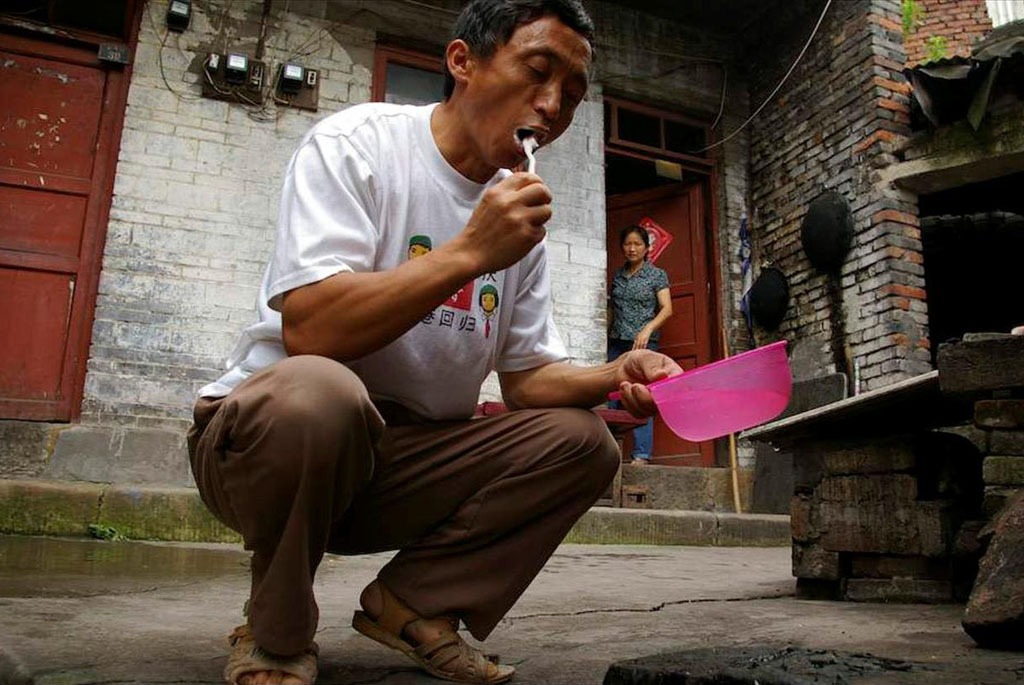One of the slides from the recent Behind the Scenes event showed one of Chongqing participants (above) seemingly in a moment of domestic bliss – brushing his teeth. Whilst on occasion we have collected this kind of data through shadowing (stalking with permission) or self documentation this particular photo is staged – part of a data collection method we’ve been experimenting with called a Simulated Day in the Life.
(Given the intimacy implied by this photo, its worth noting that we have the rights to use it to publicise the research).
The process can take a day from start to finish, ideally with some form of pre-visit to prep their and the team’s expectations. It starts with an in-depth interview that maps out ‘a typical day’ and this information is cross referenced with what we have learned from other data gathering methods, with our local team’s experiences, and our sense of what is interesting. Two or three hours is enough time to generate a photo-shoot schedule that simulates a whole day – which then takes around 6 hours to document. At some point, and with a willing co-author, I’ll properly document the pros and cons of this method.
A simple question for now – given that your credibility as a design researcher is based on techniques that range from (hands-off) observation to interviews to it looks-real-but-is-actually-staged photo shoot, whether and how to communicate what data comes from which source? In what contexts does it matter that this is a staged photo or the real deal, or as is likely some combination of the two?
Data is not absolute – it’s power and effectiveness comes from how it is interpreted, applied. If you are setting out to inform then one metric for success is ensuring the interpretation is close to it’s intended meaning. If it’s more important to inspire then the opposite might be true – other peoples’ reinterpretation and discovery of tangential links is an important part of that creative process. The fact is that once any data is out there you have little control in how it is used and potentially abused. In an age of mainstream content sharing tools how to optimise the likelihood of the former and minimise the latter?
